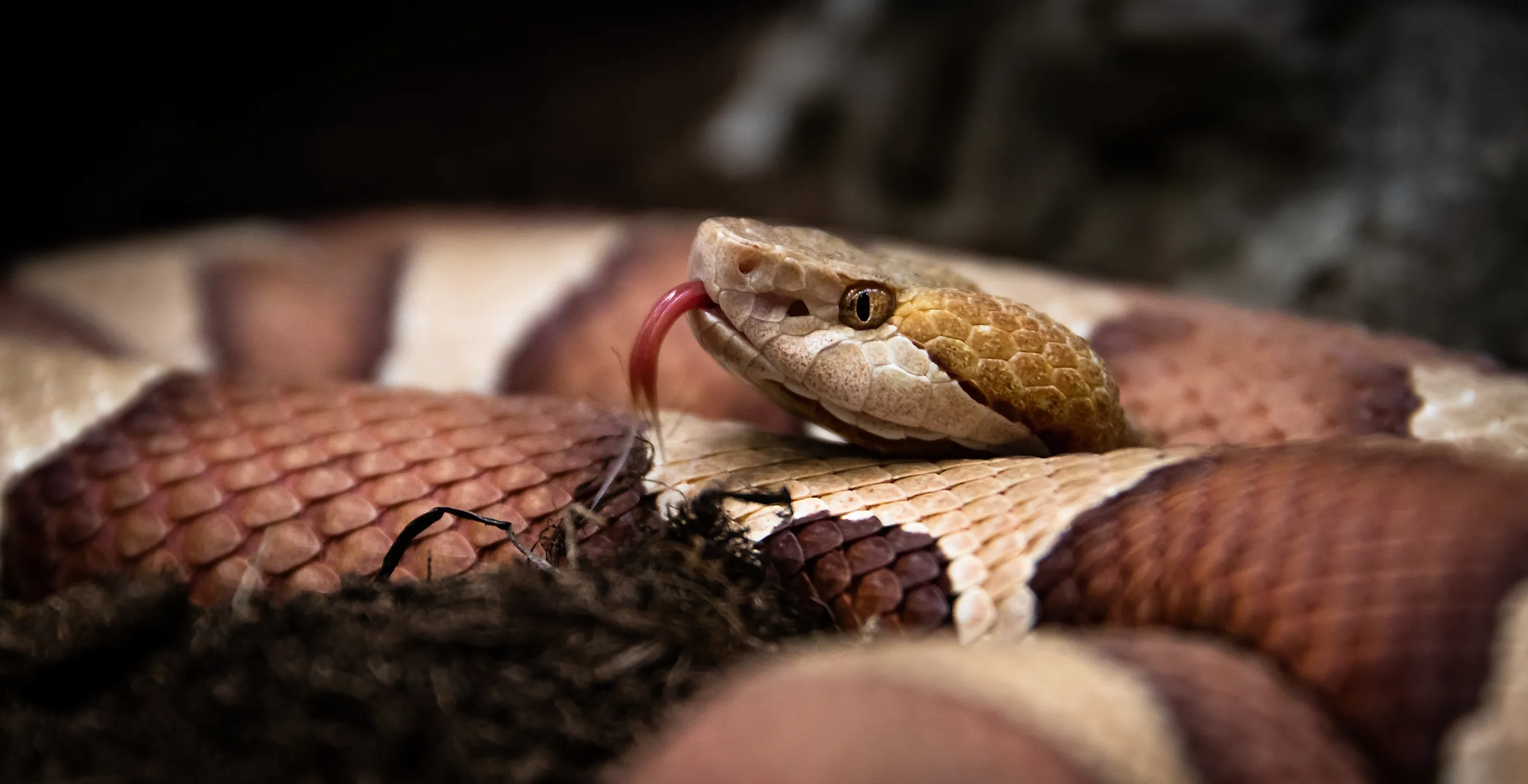
The Most Snake Infested Lakes in Georgia
Georgia is an abode of forestland in the Southeastern United States. Nearly 40% of the state is forested, providing endless outdoor recreation and wildlife opportunities. Among the ample species of birds, mammals, and reptiles that people adore to watch, snakes are one that they may need to watch out for. The state is home to nearly 50 snake species, and while most are harmless, about seven known species are venomous. Many of these, such as the eastern copperhead, are known to live in and around lakes in Georgia. To steer clear of any slithering danger when on a waterside expedition in Georgia, here are the most snake-infested lakes in the state.
Lake Hartwell
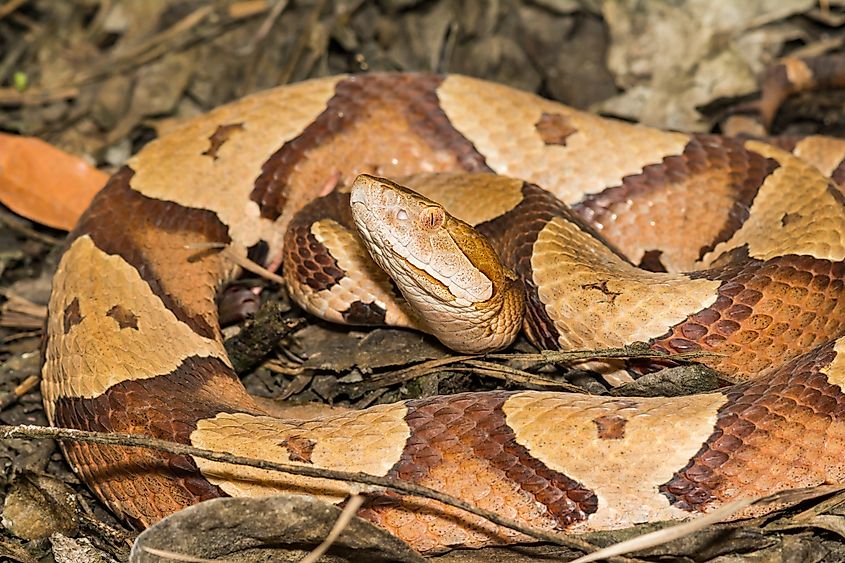
Close-up of an Eastern Copperhead (Agkistrodon contortrix).
Lake Hartwell, along the border of Georgia and South Carolina, is a large 56,000-acre man-made reservoir. This body of water is one of the largest recreation lakes in the region and boasts a whopping shoreline of 962 miles (1,548 km). Along this shoreline are plenty of towns and outdoor areas, such as Tugaloo State Park and the Boyles Recreation Area. To this end, visitors from all over can enjoy activities like camping along the nine campgrounds, hiking through the various trails, or even boating from one of the five marinas. It is also a hotspot for fishing with plenty of catfish, bream, walleye, and largemouth bass.
Along with being one of the largest, Lake Hartwell is also one of the most snake-infested lakes in the country. This body of water is home to multiple non-venomous and venomous species. In terms of non-venomous species, the garter snake, rat snake, and common water snake are among the most common. These species tend to be quite shy and aren’t too much of a risk for people. However, venomous snakes are just as abundant, including well-known species such as the eastern copperhead and timber rattlesnake. The eastern copperhead is considered to be the most common and can be identified by its distinctive brown coloration and hourglass markings. If one is spotted, it is best to swim/run away, as a bite is excruciating and can cause muscle and bone damage. Thankfully, bites from eastern copperheads are rarely fatal.
Lake Lanier
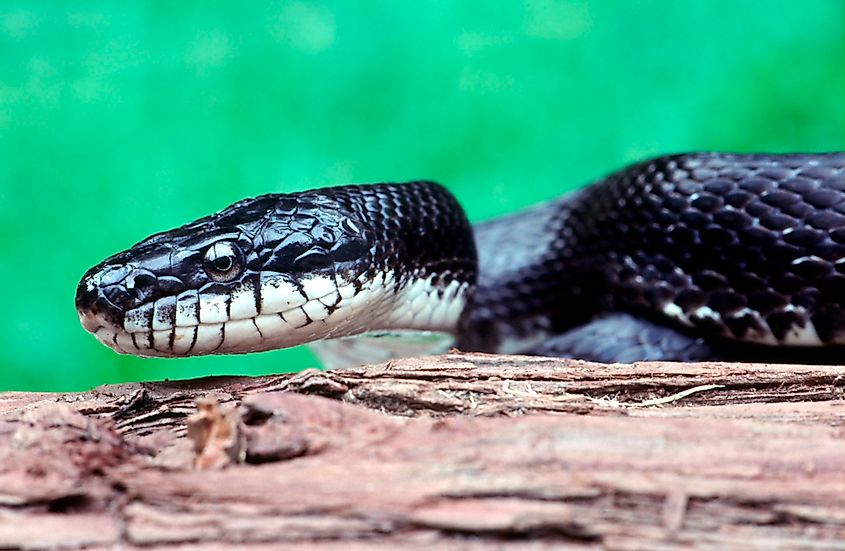
Close-up of a Black Rat Snake (Elaphe obsolete).
Lake Lanier is in northern Georgia, offering a quaint reprieve from urban life. This reservoir was created in 1956 by damming the Chattahoochee River and has since become a haven for wildlife. It boasts a large surface area of 37,000 acres and has been critical in controlling floods of the Chattahoochee River. In addition to this, it is also a habitat for multiple snake species in Georgia. The most prominent species in the region is the common black rat snake. As the name suggests, the black rat snake is noted for its black-gray coloration and can reach lengths of up to 6 feet (183 cm). Although large and avid swimmers, these snakes aren’t venomous, and their bite tends to be harmless. Another species found in this lake is the DeKay’s brown snake, a small and also non-venomous reptile.
Lake Sinclair
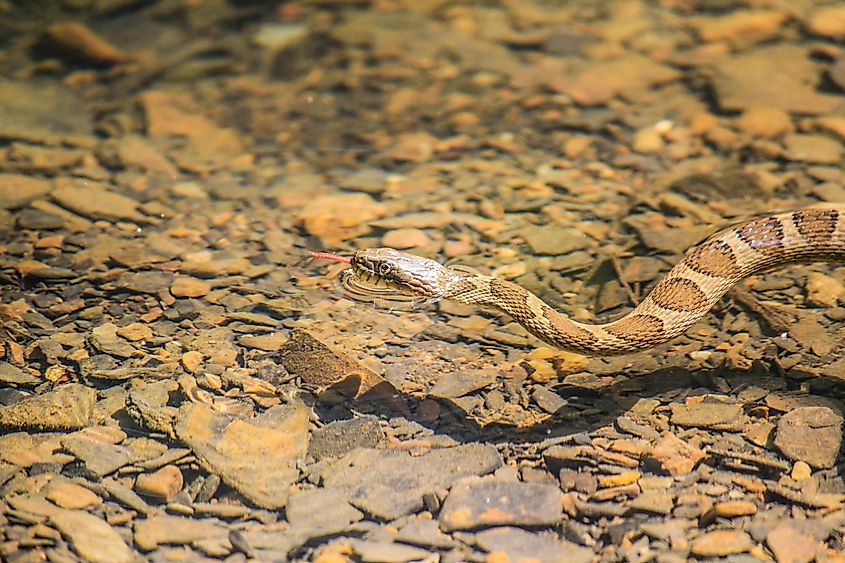
A common water snake swimming with its head above the surface.
Lake Sinclair is another man-made lake in central Georgia. The lake is managed by Georgia Power and covers more than 15,000 acres. It has a distinctive shape, extending into three large “arms,” each with smaller streams branching off. As a result, Lake Sinclair’s shoreline stretches 417 miles (671 km), offering plenty of space for recreational activities like boating, fishing, and more. Additionally, there is plenty of habitat for reptiles. Among these reptiles, snake species such as the common watersnake are the most common. This nonvenomous snake is very agile in water and can grow up to 4 ft 5 in (135 cm) long. They have a brownish color with dark bands, making them fairly easy to spot in and around Lake Sinclair.
Lake Allatoona
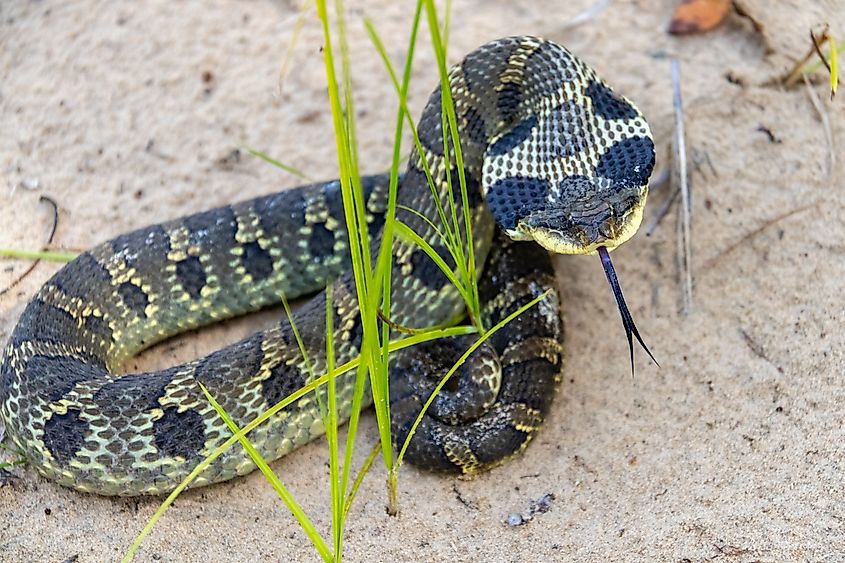
Eastern Hognose Snake with its neck flattened.
Lake Allatoona is a reservoir in northwestern Georgia. It is on the Etowah River and was created by the Allatoona Dam in the mid-1900s. Today, it is a lively destination near Cartersville with eight privately owned marinas. As a result, boating, yachting, camping, and hunting are popular activities here. The lake is also surrounded by numerous outdoor parks, including Red Top Mountain State Park, George Washington Carver Park, and Upper Stamp Creek Campground.
Ode to the endless wilderness; Lake Allatoona is one of the most snake-infested lakes in Georgia. Some common species seen around the lake include the DeKay’s brown snake, eastern hognose snake, eastern garter snake, grey rat snake, and ring-neck snake. Among these, the eastern hognose and eastern garter snakes are mildly venomous; visitors should watch out for them. Luckily, both species are quite noticeable, with the hognose having a bright brown color and the garter snake displaying a light-colored stripe along its body. So, if you see these patterns, be sure to keep your distance from the snake.
Stay Safe Around Georgia’s Snake-Infested Lakes
These lakes in Georgia share two main traits: they are popular for recreation and are infested with snakes. Because of this, it's important to know which snake species are present and which ones to avoid. For example, the brownish common watersnake is generally not a cause for concern, while the bright brown eastern hognose snake is a species you should steer clear of. Still, it's best to give snakes plenty of space, as many tend to avoid humans naturally.











